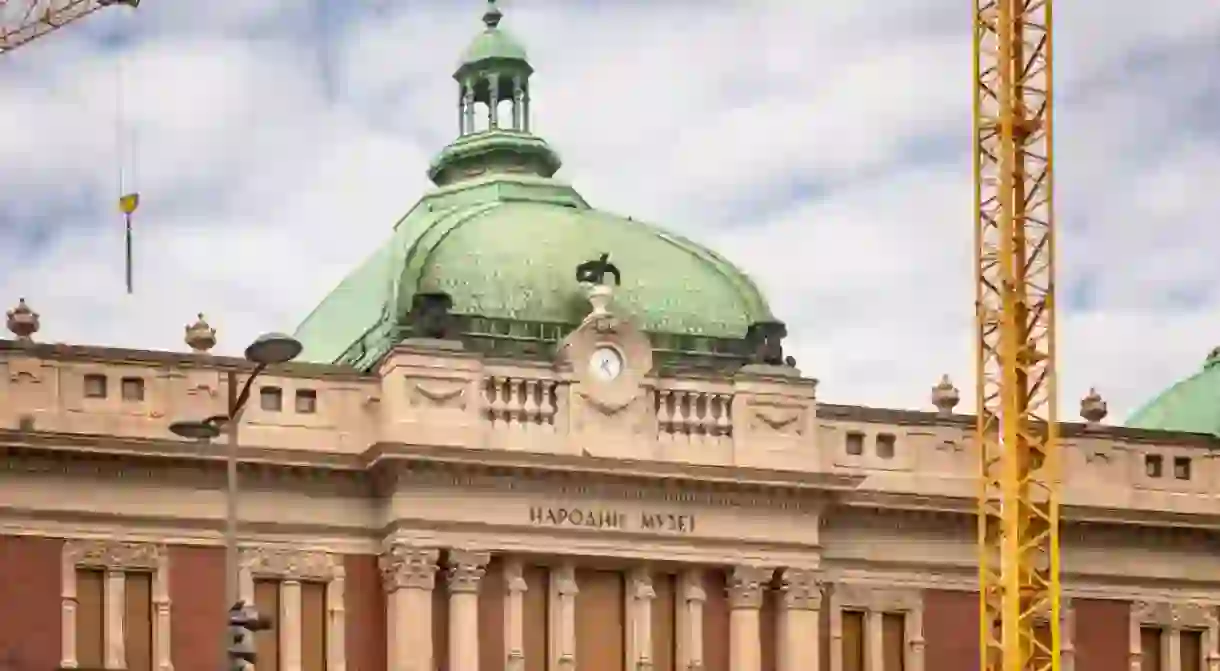Serbia's National Museum Reopens After 15 Years, Restoring Belgrade's Cultural Heart

On June 28, 2018, the National Museum of Serbia in Belgrade will open its doors once again. Fifteen long years have passed since the closure of the museum, and one of the great art collections of Europe has sadly been neglected as a result. June 28 simply can’t get here soon enough.
Magnificent beginnings
The National Museum of Serbia was opened on May 10, 1844, as part of the major renovation of Republic Square. A famous tavern once stood in its place, but the drinking hole was demolished in order to add a bit of class to the true heart of Belgrade. What exudes class more than an internationally acclaimed museum? The National Museum was the city’s first real museum, and visitors flocked to see what it had to offer.
Needless to say, there was plenty on offer. Over the 174 years have passed since that sunny (presumably) May afternoon, and the museum’s collection swelled to contain over 3,000 paintings and more than 900 sculptures. The art came from all over the world, and some of the finest works from France, the UK, Russia, Japan, Germany and others made a home on Trg Republike. The best of Serbian art joined them, and Belgrade had itself a world-class house of culture. In 1979, it became a Monument of Culture of Great Importance, although everyone knew it was one already.

Time to rebuild
The museum even managed to survive the Yugoslav Wars and the corruption of the Milošević era, adding new collections to its repertoire and maintaining its position as the premier museum in Belgrade. The art was merely papering over the cracks (literally) however, and a major renovation was needed. In 2003, the former Prime Minister Zoran Djindjić made the decision to fix the building up, and the National Museum closed its doors.
Fifteen years later, those doors are yet to open again. The work that was so badly needed had been pushed back time and time again, and what was once a source of great pride for Serbs has become an unwanted wart on the city’s cultural facade. The question changed from ‘when is the National Museum going to reopen?’ to ‘I wonder if the National Museum will ever reopen?’

Broken promise after broken promise
Time after time the government would pledge to fixing the museum up, and time after time the government’s promises would prove empty. The once beloved museum ceased to be a vast treasure chest of creativity, instead functioning purely as a meeting place for locals. Some of its collections were loaned to other museums and other buildings, but the National Museum itself became little more than a remnant from the past, a sleeping giant, a joke.
At the end of 2017, Aleksander Vučić announced that the museum is going to reopen in 2018, on June 28 no less. The date is no coincidence of course. June 28 is Vidovdan, the Serbia national day and a date that holds no small amount of significance for the Serbs. What better time to breathe new life into a once mighty Serbian museum?

Cynicism vs optimism
While everything seems to be on course for the grand reopening, locals can be forgiven for being a little bit cynical. We’ve been here before of course, and this isn’t the first time that someone has announced the resurrection of the museum. Until the doors swing open and the tourists swarm inside, there will be a sizeable portion of the population who will remain unconvinced. The old adage ‘I’ll believe it when I see it’ is particularly apt.
We hope that the naysayers are proven wrong, as Belgrade’s cultural scene will be all the better with the National Museum’s reopening. It will take some time, but this magnificent building and all the iconic art that waits inside deserve to be brought back from the dead and given the love and attention that has been lacking for over a decade and a half.













